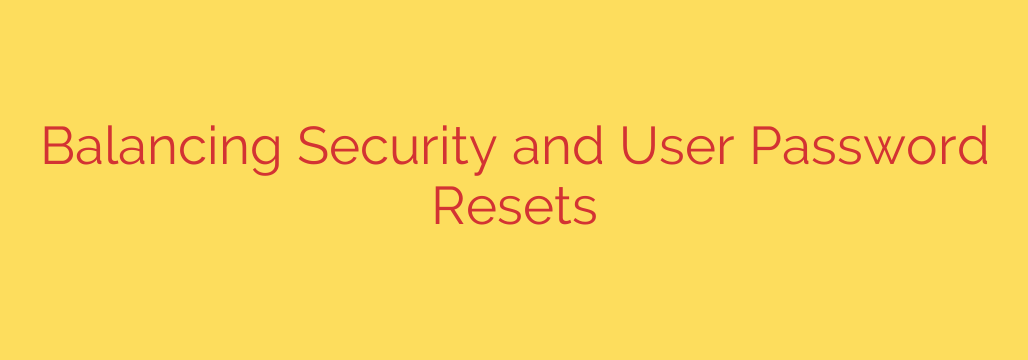
Managing how users regain access to their accounts when they forget their passwords presents a unique challenge: it must be secure enough to prevent malicious actors from taking over accounts, yet simple enough for legitimate users to navigate without excessive frustration. This process, often termed a password reset, is a critical component of any system managing user accounts.
The inherent vulnerability lies in the fact that the reset mechanism itself can become a target. Attackers might attempt to initiate resets for accounts they don’t own, hoping to intercept verification codes or links through various means like phishing, social engineering, or exploiting vulnerabilities in email or phone systems. An unauthorized account takeover initiated via a compromised reset process can lead to significant data breaches and financial losses.
Implementing robust security measures is paramount. This often involves verifying the user’s identity through a secondary channel, such as sending a unique link or code to a registered email address or phone number. However, even these methods require careful design. Expiration times for links and codes should be short, and systems should be protected against brute-force attacks trying to guess verification codes through rate limiting and lockouts after multiple failed attempts. Relying solely on easily phishable information or weak security questions is highly discouraged due to their susceptibility to compromise.
Adding layers of verification significantly enhances security. Requiring multi-factor authentication (MFA) not just for login but potentially also for initiating or completing a password reset can drastically reduce the risk of unauthorized access, even if the primary communication channel is compromised. Systems should also monitor for suspicious activity patterns during the reset process, such as requests originating from unusual locations or devices.
However, tightening security too much can negatively impact the user experience. A complex, multi-step reset process can frustrate legitimate users, leading to support calls, account abandonment, or even users choosing weaker passwords they are less likely to forget. The goal is to make the process as frictionless as possible for the rightful owner while posing significant hurdles for attackers.
Finding the optimal balance between preventing account takeover and ensuring a smooth user experience is key. This requires careful consideration of the risks associated with the specific system and the type of data it holds, designing flexible verification flows, and continuously evaluating and updating security measures in response to evolving threats. Ultimately, a well-designed password reset mechanism is a cornerstone of effective cybersecurity and user trust.
Source: https://www.bleepingcomputer.com/news/security/can-users-reset-their-own-passwords-without-sacrificing-security/








